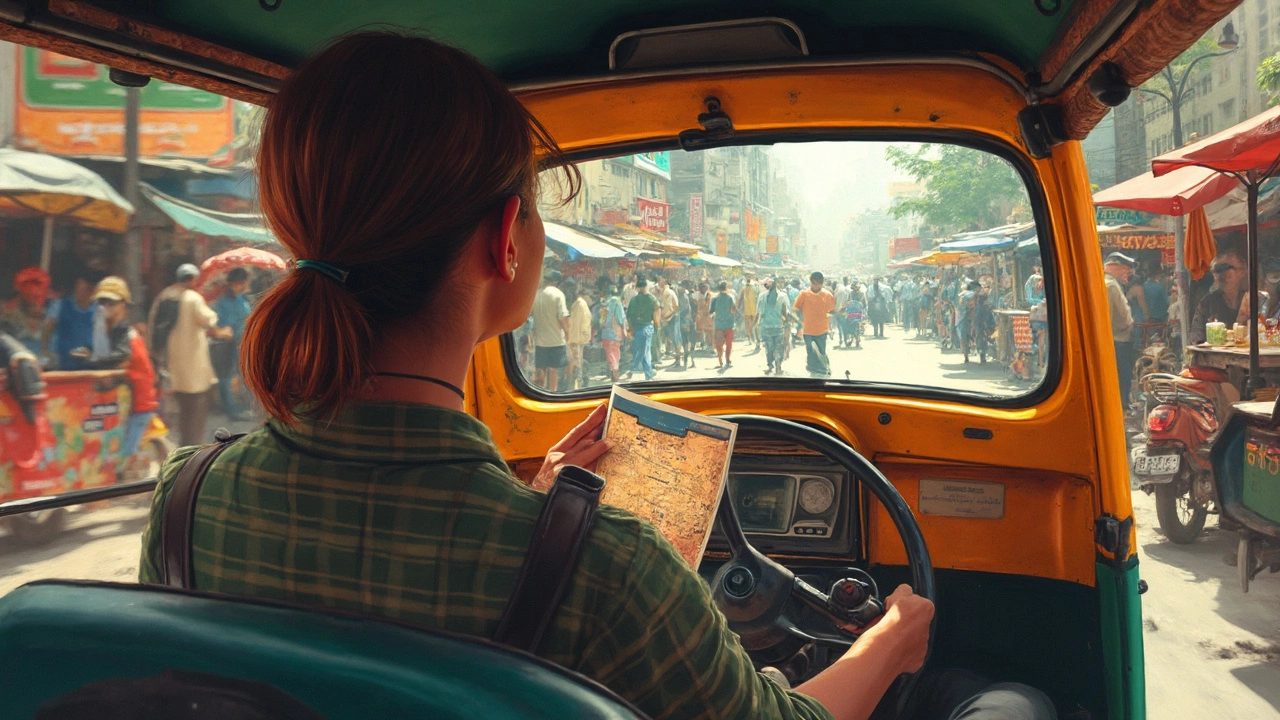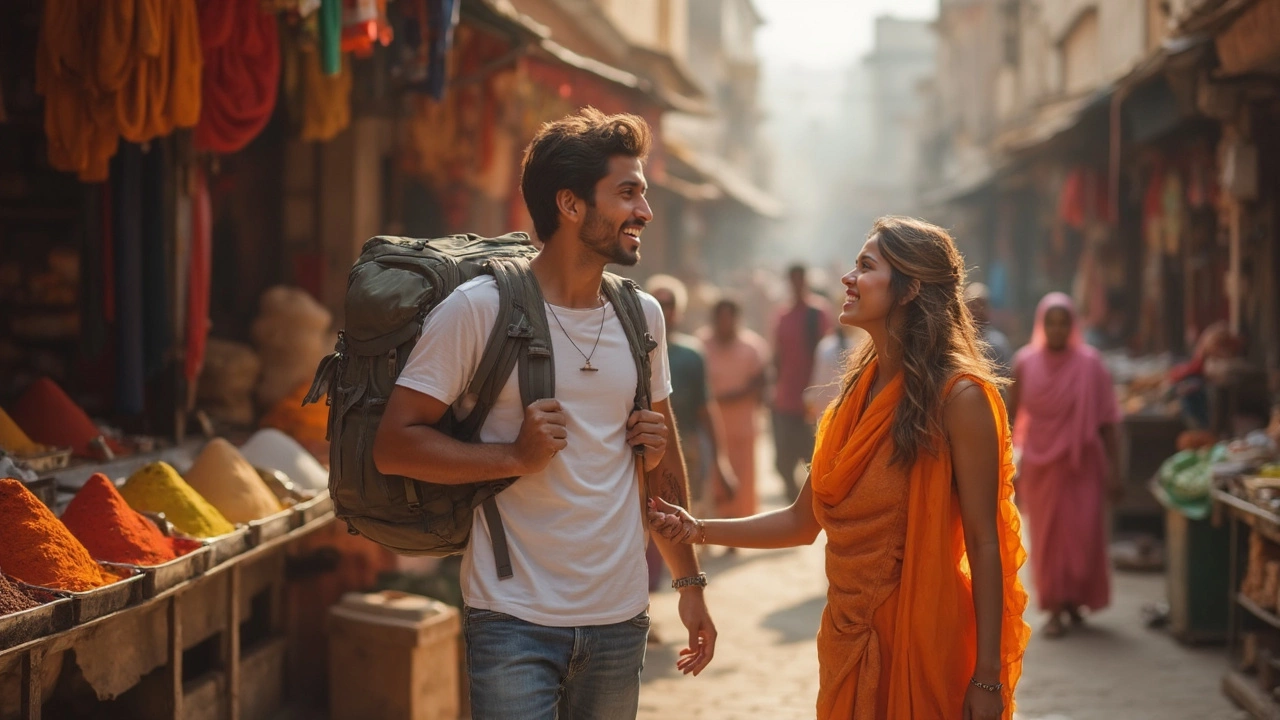India’s relationship with the US isn’t just about politicians shaking hands—regular people on the ground have their own opinions and habits, and that’s what matters when you’re planning a trip, especially on a budget. If you’re American and thinking about backpacking your way through Rajasthan or grabbing street food in Delhi, you’ll probably want to know: Will people be warm and welcoming? Will you stick out? Is it easy and safe to get around without breaking the bank?
Here’s a quick truth: Most Indians look at Americans with curiosity, sometimes warmth, and sometimes a dash of starstruck awe, especially outside the major tourist hubs. English is widely spoken, so chatting with locals, haggling over prices, or asking for directions feels less like a guessing game and more like a friendly conversation.
Prices in India can boggle your mind if you’re used to US costs. Your dollar tends to stretch like you wouldn’t believe—grab a decent meal for under two bucks or catch a cross-town bus for cents. But keep an eye out for “foreigner pricing” at some attractions—ticket booths might ask you to cough up more than the locals. Still, most feel it’s a small price for the experience, especially when you factor in how far your budget travels here.
- How India Sees US Travelers
- Money Matters: Dollar Power in India
- Staying Safe and Feeling Welcome
- Making Friends and Local Connections
How India Sees US Travelers
The dynamic between India and the US shows up on the streets way more than it does in government speeches. Americans stand out—sometimes because of the accent and sometimes because of how travel habits and clothes differ. But the overall vibe from locals is positive, even downright enthusiastic, especially if you’re in a place that doesn’t see a million tourists every year. US travelers often get approached for selfies, friendly conversations, and even invitations to family events. Kids love to practice their English or just say hello.
This curiosity isn’t just personal—it’s cultural. Indian pop culture has a longstanding fascination with everything American, from Hollywood movies to fast food. People pick up your accent right away and might throw in a few US slang words to connect. On the downside, there’s an expectation that Americans are wealthy compared to the average local, which can sometimes mean higher prices at markets (so it pays to bargain smart).
Safety isn’t usually an issue for Americans just because of their nationality. Surveys by global organizations show India ranks as one of the more welcoming places for Americans in Asia. Just don’t expect the personal space you’re used to in the States—Indians are famously curious and a bit direct when they want to know where you’re from or why you’re visiting.
| Perception | Reality |
|---|---|
| Americans are wealthy | Assumption leads to higher tourist prices, but doesn’t block kindness |
| US travelers only stick to touristy spots | Locals love when you wander off the main path |
| Americans are friendly and open | True—most travelers score points by joining local games or conversations |
| Indians treat all foreigners the same | English-speaking US travelers get easier access to conversations and help |
Looking at 2024 numbers, the US was one of the top five countries sending tourists to India, with nearly 1.5 million arrivals, showing it’s a well-trodden route. So if you’re worried about standing out or facing awkward questions, it rarely goes beyond simple curiosity. Bring an open mind, a good attitude, and maybe a willingness to share what state you’re from—people love stories from America, whether it’s about snow in Michigan or BBQ in Texas.
One thing’s for sure—if you like attention (or don’t mind it), India is a place where being American can start conversations, open doors, and usually score you a smile or two. And if you travel on a budget, the fact that folks are familiar with Americans helps you ask for the best deals and local advice with less confusion.
Money Matters: Dollar Power in India
When it comes to getting more bang for your buck, India is hard to beat. The budget travel crowd loves the country for a reason: the US dollar goes a long way here. As of May 2025, one US dollar is roughly 83 Indian rupees. That exchange rate can make you feel like a high roller, even if you’re pinching pennies at home.
Here’s a peek at what your money can buy:
| Item/Service | Average Cost in Rupees | US Dollar Equivalent |
|---|---|---|
| Street Food Snack (Samosa/Chaat) | 30–60 | $0.36–$0.72 |
| Local Restaurant Meal | 150–300 | $1.80–$3.60 |
| Guesthouse/Hostel | 500–1200 | $6–$14 |
| Metro/Suburban Train Ticket | 10–50 | $0.12–$0.60 |
| Entry to Major Sites (e.g., Taj Mahal for Foreigners) | 1100–1300 | $13–$15.50 |
The biggest win is in daily spending. You can live on $25–$30 a day, even with a few splurges. But don’t get comfy too fast—tourist hotspots like Goa or Mumbai know how to lighten your wallet. Major attractions often charge foreigners 10–20 times the local ticket price. Transportation, however, is a steal, whether you’re booking a train ride across states or hopping into an auto rickshaw.
ATMs are everywhere in cities, but carry cash for rural areas. Street vendors, tiny shops, and some tuk-tuk drivers don’t take cards. If you’re using cash, break bigger bills at big stores or restaurants first, because small stalls rarely have change for $10 bills (or the rupee equivalent).
One sneaky tip: Use ride-hailing apps like Ola or Uber to avoid haggling and get a better deal on taxis. Also, check for “foreigner tax” at monuments before you go—it helps to know what locals pay so you don’t feel ripped off. Bottom line? India is heaven for budget-conscious travelers from the US, as long as you keep your wits (and a little cash) handy.

Staying Safe and Feeling Welcome
When it comes to safety, you’ll notice that India rates all over the map depending on the city, region, and how you travel. The good news: most American visitors say they feel genuinely welcomed. The bad news? Like anywhere, you need to stay aware—pickpocketing and tourist scams do happen, especially in crowded places like railway stations or big city markets.
The U.S. Department of State puts it simply:
"Exercise increased caution in India due to crime and terrorism. Petty crime, such as pickpocketing and purse snatching, is common, especially in crowded areas."Still, violent crime against tourists is rare. If you’re sensible—don’t flash cash, keep your phone tucked away in busy streets, and use registered taxis or ride-shares—you’ll dodge most issues.
Women travelers sometimes get extra questions about safety. Being aware of cultural norms helps: dressing a little more modestly and avoiding late-night solo strolls goes a long way in feeling comfortable. If you ever feel out of place, ducking into a big hotel lobby or popular café till you get your bearings is usually fine.
On the “feeling welcome” front, Indian hospitality is famous. Don’t be surprised if locals want selfies with you or invite you home for a chai. Many Americans say shopkeepers and rickshaw drivers call them “friend” immediately—and often mean it. Why? Because many people in India see the U.S. as exciting, modern, and positive. That warm vibe shows up from guesthouses to street stalls.
- Stick to busy areas, especially after dark
- If something feels off, trust your gut
- Use cash in small amounts and stash the rest safely
- Keep digital copies of your passport, just in case
- Use registered transport—apps like Ola and Uber make it easy
The main thing: India isn’t dangerous for most visitors, just occasionally chaotic. Locals are used to foreigners, and usually curious or eager to help. Respect the culture, trust your instincts, and your India trip will likely be memorable for all the right reasons.
Making Friends and Local Connections
If you’re heading to India on a budget, there’s one thing that can turn a good trip into a great one: making friends with locals. Indians, especially in smaller cities and villages, are usually quick to chat and curious about where you’re from. And they love talking to Americans – sometimes you’ll even get invited for chai or dinner after just a quick chat.
Hostels, guesthouses, and homestays are perfect spots to meet people. Even if you’re solo, these places are social magnets – chill common rooms, group dinners, and Bollywood movie nights. Apps like Couchsurfing and Meetup are legit popular in big cities like Mumbai, Bangalore, and Delhi, where young people are excited to meet travelers.
One thing to know: many young Indians speak English with confidence thanks to it being an official language and used in universities. That makes it super easy to form fast friendships or just get local travel hacks. But keep in mind, some older folks or rural families might not be as fluent – don’t stress, gestures and smiles always work.
Want to plug into real life, beyond selfie-taking? Try these:
- Join local tours or food walks – Not the packaged corporate types, but neighborhood walks organized by students or small groups. They’re often cheap and super candid.
- Volunteer a day at a community kitchen (like a Sikh langar) – You’ll not only serve food but get pulled into friendly conversations.
- Take local transport – Instead of always hopping in a cab, try trains or buses. Commuters love swapping stories, and you’ll learn a thing or two about real life.
- Look up expat gatherings – Facebook and WhatsApp groups are full of people (locals and foreigners) looking to hang out, swap tips, or split travel costs.
Here’s a quick look at how Indians usually connect with foreign travelers:
| Way of Connecting | Where/How | Budget-Friendly? |
|---|---|---|
| Homestays | All over India, especially Kerala and Rajasthan | Yes |
| Local Festivals | Public events, city streets, village fairs | Mostly free |
| Public Transport | Trains, buses everywhere | Very cheap |
| University Campuses | Big cities, youth events, cultural fests | Free entry or small fee |
| Outdoor Cafes | Urban hubs like Pune, Bangalore, Delhi | Cheap eats, great for conversations |
The key to making real connections? Stay open and say yes to invitations – even if it’s just for a quick snack or a family photo. People are proud to show off their culture. And sometimes, a random chai stall or a cricket match in a park turns into the highlight of your whole trip.
